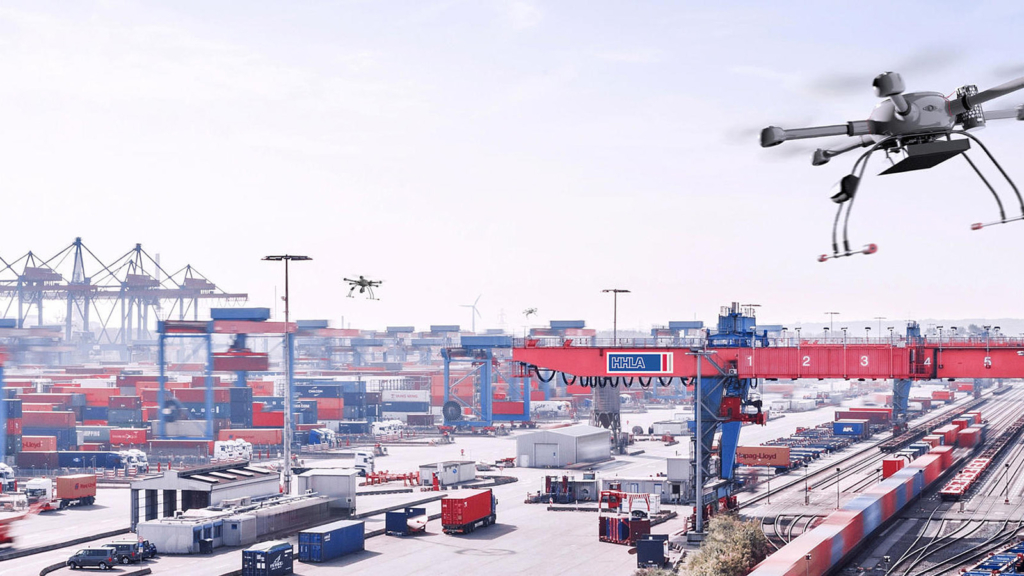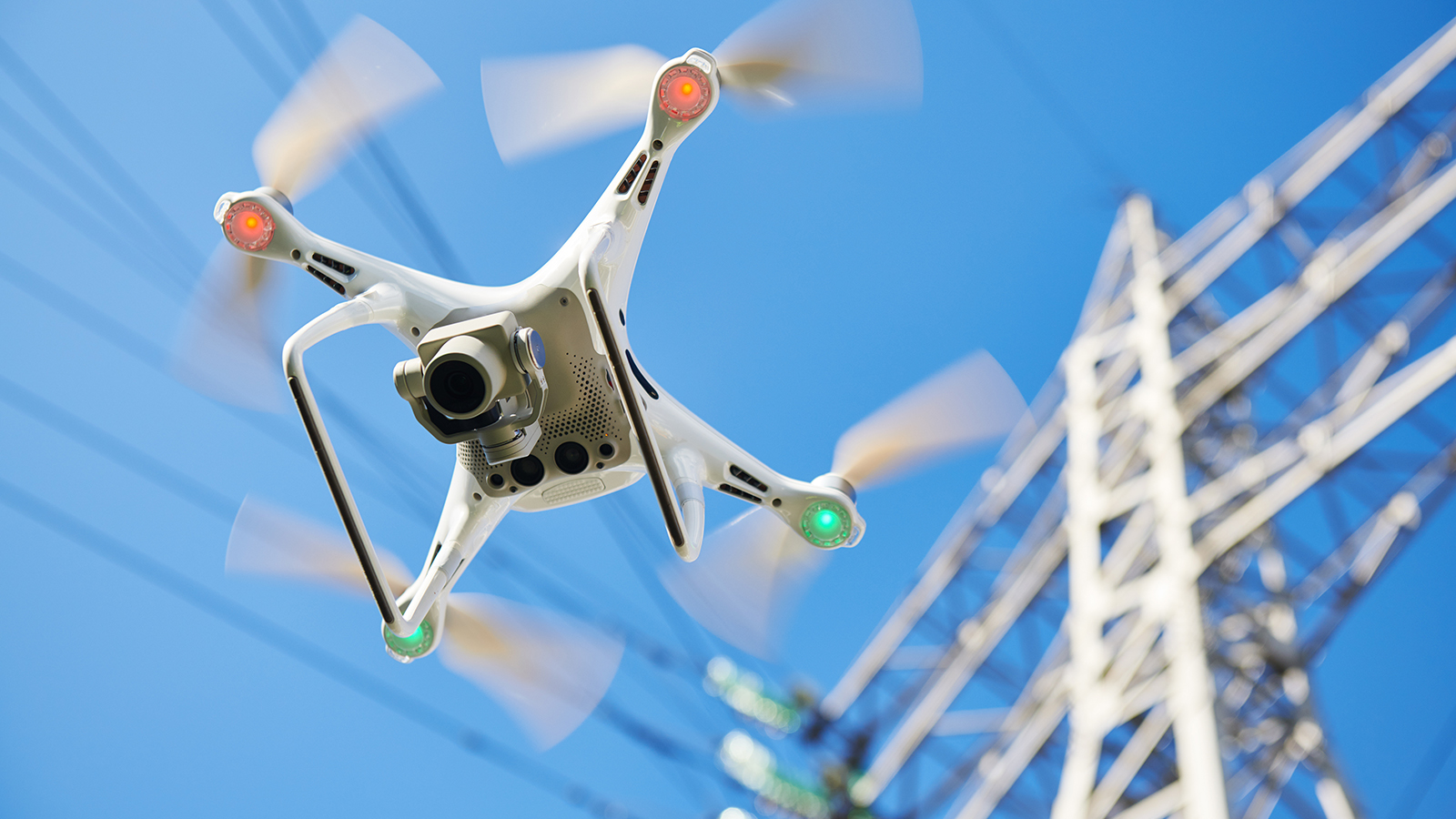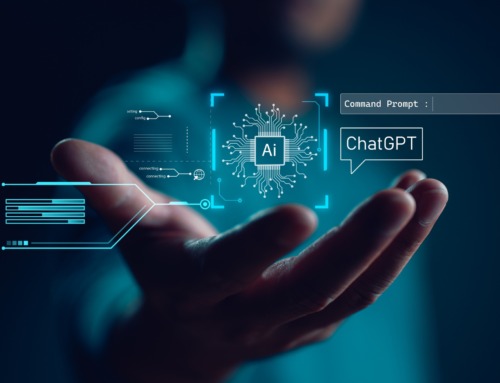With artificial intelligence, autonomous drones take over the guardian role in critical infrastructure
Whether it is corrosion of electricity pylons, monitoring gas lines, or controlling port facilities: Autonomous drones and AI systems take on tasks that humans can only do with great effort and at risk of their lives.
Helmut Spudich
The British network operator UK National Grid wants to use autonomously flying drones and artificial intelligence to evaluate the image data to monitor and maintain its electricity pylons. On the one hand, this should significantly reduce maintenance costs. On the other hand, it improves maintenance: climbers’ inspection of power poles requires considerable safety precautions, which leads to long monitoring intervals.
A successful field trial with drones took place in the spring of this year in the rural stage of Nottinghamshire, England. A whirring drone circles the high-voltage pylons a few meters away. It is not steered by a pilot but by a computerized control station. When she lands again a few minutes later to the applause of the technicians, she has already sent her high-resolution pictures and diagnostic data to a system of artificial intelligence (AI) to check for corrosion, reported the tech magazine Wired.
Currently, climbing technicians monitor towers almost exclusively, which poses significant risks. Occasionally helicopters are used, which is expensive and pollutes the environment. Also, the data provided by the aircraft is of poorer quality due to the considerable distance required. Maintenance measures are thus usually not carried out based on individually diagnosed weaknesses but automatically at regular intervals. This schedule also maintains all masts that are in perfect condition. On the other hand, drones can do this on an ongoing basis, and maintenance is only carried out where it is needed.
Tailored maintenance
“We simply order the drone to examine a specific power pole. The drone is then able to decide by itself on the flight route, which parts of the pole need to be inspected, and how it collects the necessary data,” says the founder of Sees.ai, John McKenna, whose company is developing the project. Manual control would not be an alternative because a pilot can only control one drone. With autonomous drones, on the other hand, the human pilot acts more like an air traffic controller who keeps an overview of many drones.
In other countries, drones are also being “trained” to monitor the power grid: In Florida, drones from the Israeli company Percepto helped restore the grid after hurricane damage. In Norway, the power grid operator Agder Energi Nett announced last year that it would use drones for grid monitoring. Unlike the British project, the drones here do not inspect individual pylons but fly over the network along the lines to report storms and fallen branches in winter. Three Swedish energy suppliers have now signed surveillance contracts with the drone company Airpelago.
Airspace control problem
All these projects have in common the unresolved issue of airspace surveillance when using drones. While the technology is developing faster and the solution can take on more complex tasks, regulating airspace in most countries is lagging behind the new requirements. In many countries, aviation authorities require that drones can only be flown when there is a direct line of sight to their pilot. Previous attempts are based on special permits and cannot be implemented in more extensive practice. Due to these bureaucratic hurdles, several startups are developing their systems in African countries that do not have corresponding regulations.
Technical challenges also remain. The electromagnetic field from power lines can affect drone systems. GPS navigation is often imprecise when calculating the flight altitude in dense vegetation and hilly areas. In some rural areas, satellite coverage is poor. This is why anti-collision systems are needed to ensure flight safety, posing new challenges.
Not only electricity suppliers are currently testing drones to monitor their networks. Thyssengas, a German operator of natural gas networks, is also working on using drones to inspect its lines. These lines are monitored on the ground and by regular helicopter flights along the route, causing noise and emissions from aviation and high costs to the company. Alternatively, fully automated drones should therefore take over the surveillance task from the air. The drones use hangars along the route to recharge their batteries and download image data. AI systems then analyze these images for possible problems along the line – including piles of wood, mounds of earth, or construction machinery near the pipelines.
Drones monitor the port of Hamburg
While using drones over the vast port area of Hamburg is more straightforward in regulation, it is technically more complex than monitoring electricity and gas lines. The site of Europe’s third-largest port (after Rotterdam and Amsterdam) would have space for more than 10,000 football fields.

Up to 100 drones monitor Hamburg’s Harbor / @HHLA
You can only get an overview of what is happening in this area from a bird’s eye view. Automated drones inspect container bridges and asphalt surfaces, among other things, and – in conjunction with AI systems in the cloud – detect damage and wear and tear. The high-resolution images are broadcast live to control stations. This allows supervisors to react, for example, when people approach blocked hazardous areas without bringing the entire logistics chain to a standstill.
In addition to their job as guards of the port area, the drones also take on logistical tasks. They speed up freight traffic by carrying packages and documents such as bills of landing. What is still a dream of the future regarding parcel delivery to private addresses is already a reality in the Port of Hamburg. A unique challenge of air traffic over the port of Hamburg: Up to 100 drones can be in flight simultaneously without getting in each other’s way.
This is made possible by the Port of Hamburg’s own mobile network, a so-called campus network, which was set up and operated by Deutsche Telekom. The campus network makes it possible to prioritize the data traffic of the drones and thus work without interference. Control signals always have priority over other data traffic, such as image data transmission. The drones are trained for their responsible tasks at a second location. They are tested and set up there before arriving at the Port of Hamburg, completely airworthy and ready for use.
Share post:




